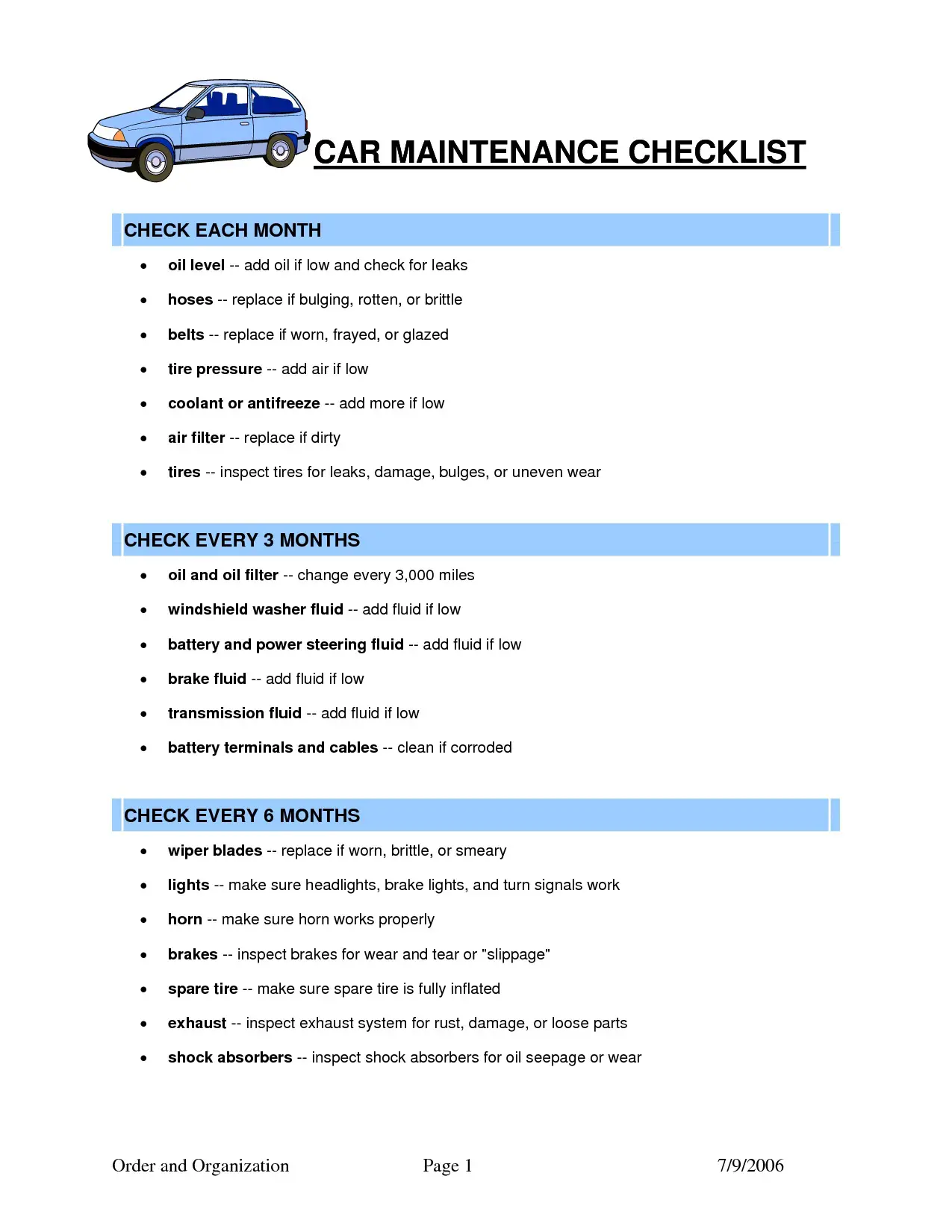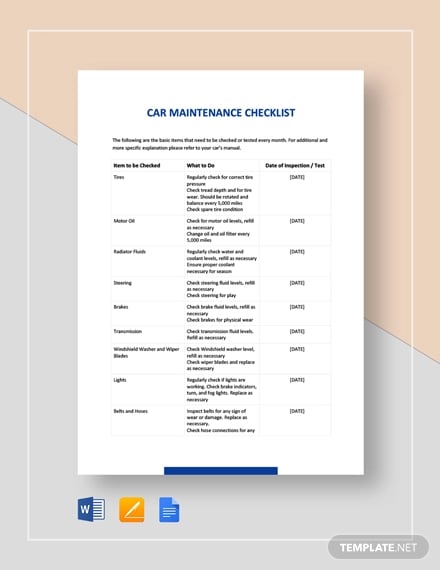

Pour in new oil up to the proper level, and replace the cap.Prepare the new filter by smearing a bit of clean oil on the gasket ring, then screw in the new filter and replace the oil plug.Unscrew the oil filter over the drain pan.Wait several minutes for the oil to drain.Place a drain pan underneath the engine, open the hood and remove the oil cap, then remove the oil plug under the vehicle.Jack up the vehicle (follow these safety tips) and use jack stands to secure it.

Pull the car onto level ground and let it run for about 10 minutes to warm up the oil.If they include steps to follow, use your manual.
#Basic car maintenance checklist manual
Check the owner's manual for the type and weight of the oil you need (it's critical to follow their recommendations for oil viscosity to prevent engine damage). You can take your car to a mechanic for this, but it's actually pretty easy to do on most vehicles. If it's not full or it's dark or thick, it's time to change the oil. It should be at the "full" line, and the fluid should be clear. Look at the end of the stick and see where the oil level is. Ready to get started? Check and change the oilĪfter a short drive, when the engine is still warm, locate the dipstick labeled "oil," pull it out and wipe off the residue with a towel. Battery tester and/or charger (possibly a new battery).Transmission, power steering and brake fluids.Some of these won't need replacing on your car, but here's everything in the list that you might have to pick up:

We recommend doing an initial skim over the entire list and figuring out what you need at the auto parts store. You might typically keep your owner's manual in the glove box and only consult it when a light comes on, but you'll need it for model-specific detailed instructions on many of these steps. In just a few hours, you can go over these checks and repairs to make sure your car is in top condition:īefore you get started, you need to find your owner's manual, some basic tools and possibly visit an auto parts store.


 0 kommentar(er)
0 kommentar(er)
